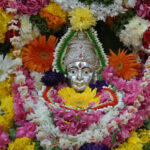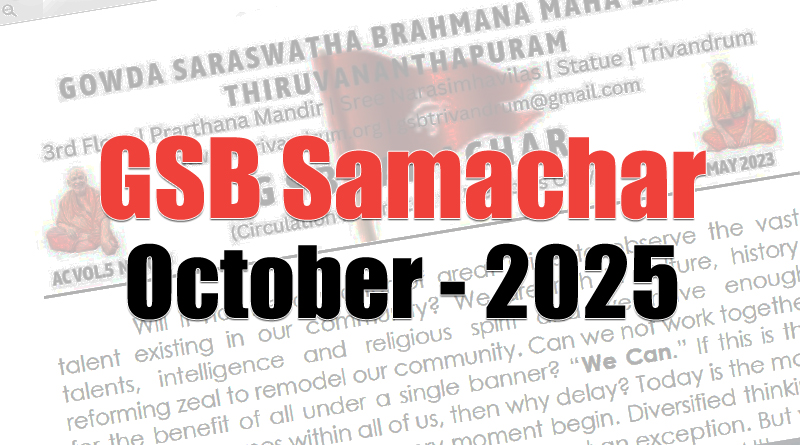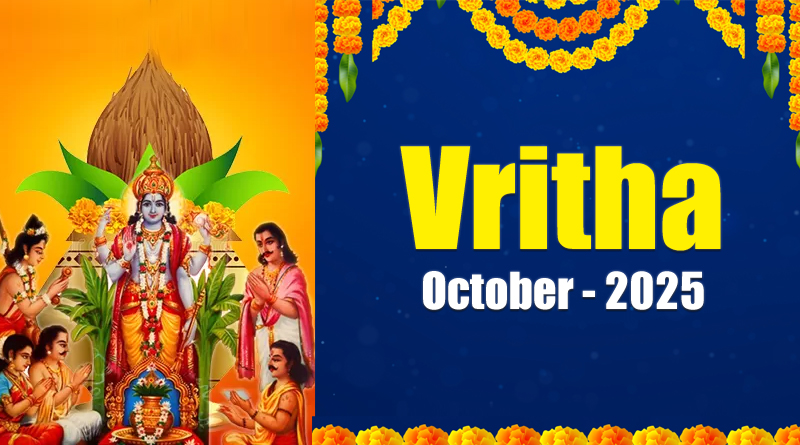The election for council members of AATTD is to be held on 5th November 2023. The two main temples, Thuravoor and Alapuzha and two at Varapuzha and Kozhencherry, various building complexes, schools, land assets, agricultural lands and Narasimha Vilas complex in Trivandrum, comes under the AATTD. All assets holdings of AATTD are the magnanimous contributions and donations of philanthropies and the royal family of Travancore. The assets were protected from taking over by the government of Kerala, by forming the Alapuzha Ananthanarayanapuram Thuravoor Tirumala Deveswom. It was formed as a Trust of all the GSBs residing in the “Ashta Gramas”, and this Trust shall utilise the income generated, for the Dharmic and Religious activities and well being of the GSB community residing in the Ashta Gramas. The Commitee comprises of nine members, and is elected for a term of five years. The expenses of the four temples are fully met with from the revenue generated from the above said assets. One of the main source of income of the AATTD is the rental income from Narasimhavilas, Trivandrum. Our Guruvarya Sudheendra Thirtha Swamiji gave instruction to the AATTD council to make available the third floor of Narasimha Vilas to the Trivandrum GSB community who are part of the Ashta Grama. The then President and the entire committee members whole heartedly made this hall available for the samajiks. After that many committees came and we were given full support by them. Unfortunately, the last committee turned out hostile towards Trivandrum. Due to wrong feedbacks given by some unworthy elements, they wanted to remove the GSB community from Narasimha vilas, and rent out the hall for commercial purposes. The covid time came as a blessing to Trivandrumites. They were not able to implement their ill stratagies. And their tenure ended.
This election is very crucial for us. We need to have a strong, efficient and competent member in the council of AATTD to represent and protect the Samajiks of Trivandrum. In the Mahajana yogam conducted on October 2nd, our sabha Secretary Shri V Somnatha Prabhu was nominated as the candidate from Trivandrum. Shri V Somnatha Prabhu is a native of Kayamkulam and is settled in Trivandrum for the past forty years. He is retired from Keltron, council member for twenty years, and presently is the Secretary of our Samaj for ten years. He is a hard core samaj sevak, and a proven administrator with leadership qualities. Please give full support to Shri V Somnatha Prabhu and also request and seek support of your relatives and friends in Kollam. Kindly render your valuable mandates for our Samaj.
Navarathri is observed in honour of the goddess Durga, an aspect of Adi Parashakti, the supreme goddess. It spans over nine nights in the month of Aswina. A notable Hindu tradition during Navarathri is the adoration of Saraswati, the Goddess of knowledge, learning, music, and arts. On the ninth day of Navarathri, peace and knowledge is celebrated. Warriors thank, decorate, and worship their weapons, offering prayers to Saraswathi. Musicians upkeep, play, and pray for their musical instruments. Farmers, carpenters, pottery makers, shopkeepers, and all trade people decorate and worship their equipment, machinery and tools. Students visit their teachers, pay respects and seek their blessings. Pratipada, is associated with the form Shailaputri, an incarnation of Parvati. It is in this form that Durga is worshipped as the daughter of Himavan. She is depicted as riding the bull, Nandi, with a trishula in her right hand and lotus flower in her left. Shailaputri is considered to be the direct incarnation of Mahakali. The colour of the day is yellow, which depicts action and vigour. She is considered to be the reincarnation of Sati and Hemavati. On Dwitiya Goddess Brahmacharini, another incarnation of Parvati, is worshipped. In this form, Parvati became Yogini, her unmarried self. Brahmacharini is worshipped for emancipation and endowment of peace and prosperity. Depicted as walking bare feet and holding japamala and kamandala in her hands, she symbolizes bliss and calm. Green is the colour code of this day. Tritiya commemorates the worship of Chandraghanta, the name derived from the fact that after marrying Shiva, Parvati adorned her forehead with the ardhachandra. She is the embodiment of beauty and symbolic of bravery. Grey is the colour of the third day, which is a vivacious colour and can cheer up everyone’s mood. Goddess Kushmanda is worshipped on Chaturthi. Believed to be the creative power of the universe, Kushmanda is associated with the endowment of vegetation on earth, and hence, the colour of the day is orange. She is depicted as having eight arms sitting on a tiger. Skandamata, the goddess worshipped on Panchami, is the mother of Skanda. The white colour is symbolic of the transforming strength of a mother when her child is confronted with danger. She is depicted riding a ferocious lion, having four arms, and holding her baby. Born to sage Katyayna, she is an incarnation of Durga and is shown to exhibit courage which is symbolized by the colour red. Known as the warrior goddess, she is considered one of the most violent forms of Devi. In this avatar, Katyayani rides a lion and has four hands. She is a form of Parvati, Mahalakshmi, Mahasaraswati. She is celebrated on Shasti. Considered the most ferocious form of Goddess Durga, Kalarathri is revered on Sapthami. It is believed that Parvati removed her pale skin to kill the demons Sumbha and Nisumbha.
The colour of the day is royal blue. The Goddess appears in red-coloured attire or tiger skin with a lot of rage in her fiery eyes, her skin turns dark. The red colour portrays prayer and assures the devotees that the Goddess will protect them from harm. She is celebrated on Sapthami. Mahagowri symbolizes intelligence and peace. It is believed when Kaalarathri took a bath in the Ganga, she gained a warmer complexion. The colour associated with this day is pink which depicts optimism. She is celebrated on Ashtami. On the last day of the festival known as Navami, people pray to Siddhidhathri. Sitting on a lotus, she is believed to possess and bestow all types of Siddhis. Here she is worshiped as Mahalakshmi. The purple colour of the day portrays an admiration towards nature’s beauty. Siddhidhatri is seen as the Ardhanarishvara form of Shiva and Shakti. It is believed that one side of Lord Shiva’s body is that of Goddess Siddhidathri. He is also known by the name of Ardhanarishwara. According to Vedic scriptures, Lord Shiva attained all the siddhis by worshipping this Goddess. In Kerala, Ashtami, Navami, and Vijayadashami of Navarathri are celebrated as Saraswathi Pooja. The books are placed for pooja on Ashtami in their own houses, schools and in temples. On Vijayadashami, the books are ceremoniously taken out, for recitation and writing after worshipping Godess Saraswathi. Vijayadashami is considered auspicious for initiating children into writing and reading, and is celebrated as Vidyarambham.
Report: The Chaturmasa Kanikka received from the Samajiks was samarpith to our Poojaneeya Guru and Sree Kashi Mathadheesh H H Srimad Samyameendra Tirtha Swamiji, camping at Bangalore for Chathurmasa Vritha along with the Vinanthi Patram inviting Swamiji to Thiruvananthapuram.
During the month of September, we celebrated Sri Krishna Janmashtami on 6th and Vinayaka Chathurthy on 19th in the traditional way at our Prarthana Mandir. Excellent support and participation from the Samajiks was there in both the functions. The monthly Sathyanarayana Vritha Pooja and Sabha Sammelan was held on 24th Sunday. Sri R Ranga Naik, “Kavitha”,TC 68/350, Thiruvallam, was the Pooja Yajman. Pooja was well attended.








